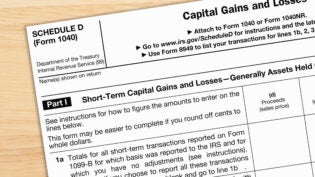
When you file taxes as a solo business owner, things are more complicated than those days when you may have a received a W2 from a single employer. However, you’ve also got plenty of opportunities to trim your tax bill.
To that end, here are 10 tax tips for the solo pro working from home. Of course, as with any article you read, these are general tips and should never take the place of individualized advice from a tax accountant or CPA.
1. Deduct your home office
To qualify your home office as a legitimate business expense, it’s got to be a place that is used exclusively for business activities. If your kitchen table doubles as your work desk, you won’t be able to deduct it. But, if you’ve got a dedicated room for an office, or even a portion of a room, you’ll be able to deduct some of your housing costs.
For example, Sarah, a graphic designer, uses a spare room in her rental apartment as her office. The apartment is 1,900 sq. ft. and the office is 180 sq. ft. (9.5% of the total square footage). She’s able to write off 9.5% of certain home expenses including her rent payment and renter’s insurance. And if she painted the room, she’d be able to deduct those costs as well.
Note that starting in 2014 (for your 2013 returns), you’ll have a new, simplified option for claiming the home office where you don’t have to calculate a percentage. In this method, you can claim $5 per square foot of the office up to 300 sq. ft.
You may have heard that the home office deduction is a big red flag, and the IRS is more likely to audit the self-employed who take it. However, if you’re legitimately entitled to the deduction, take it. It can be one of your most significant annual expenses.
Form to know: Form 8829: Expenses for Business Use of Your Home
2. Home utilities
If you’re taking a home office deduction, you’re also able to deduct a portion of your utility bills—namely your monthly heating and electricity bills. In this case, you can deduct the same percentage as the rent/mortgage deduction described above. You can also deduct some of your broadband/Internet bill, but you’ve got to take into account that you most likely use your home broadband for non-work purposes as well. For example, Vijay deducts 50% of his monthly broadband bill as a business expense.
3. Office supplies
Don’t forget all the paper, ink toner, postage, paperclips, etc. that you purchase. These are all fully deductible (provided you can prove you’re using them for your business). How about your new computer or iPad? These can also be deducted. However, keep in mind that if you only have one tablet or laptop, then most likely you’re also using it for personal purposes as well. And in this case, you can only expense the percentage of how much the equipment is used for business (i.e. 50% or 60%).
Form to know: Publication 535 Business Expenses
4. Travel expenses
Did you attend a conference this year? Do you travel to meet a client (and aren’t reimbursed for those costs)? If so, you can deduct these expenses. Here’s what you need to know:
- You can deduct any transportation costs (plane tickets, bus fare, taxis, airport parking, rental car)
- You can deduct your lodging and tips
- You can deduct 50% of your meals for business days
Also, keep in mind that if you have an out-of-town business day on Friday and one on Monday, you’re also allowed to deduct your lodging and meal costs from over the weekend too!
Form to know: Pub 463 Travel
5. Autos and commuting
If you’re working from home, you obviously can’t deduct any kind of daily commute—you also can’t deduct your morning trip to the local coffee house (no matter how necessary it might be!). But if you travel to meet a client, perform a job outside the home, purchase business supplies, conduct research, or do any other kind of activity for your job, you can deduct this travel. That includes a standard mileage deduction (or public transit fares), parking, and tolls.
Form to know: Pub 463 Travel
6. Taking a client out to lunch
Taking a client out to lunch is a time-honored tradition, but it also causes its fair share of issues tax-wise. First, you can only deduct 50% of the meal, not the whole thing. And perhaps more importantly, the IRS is going to be on the lookout for excessive or extravagant deductions. You’re going to run into trouble if you think you can fly a client to Barcelona for tapas or try to expense a $300 bottle of Cabernet with lunch.
Here’s what does work. Lucy, a PR professional, brought her new client to lunch to finalize their contract. The meal came to $74 including tips and taxes, so she was able to deduct $37 as a business expense. Lucy kept the receipt and on the back, jotted down the date, the client’s name, as well as a few notes on the business matters discussed.
Form to know: Pub 463 Entertainment
7. Upgrade your office
If you’ve been thinking about a new desk, office chair, bookcase, task lamp, or other office furniture, keep in mind that these are all allowable deductions. Trying to expense a new painting might be a stretch, unless you bring clients to your home office. There are two ways to claim a deduction: all at once in the year when you made the purchase or gradually over the life of the property (known as depreciation deductions).
Form to know: Pub 946: How to depreciate property
8. Your health insurance
Self-employed individuals (including sole proprietors) may be able to deduct the cost of health insurance for themselves and their family. However, you can’t deduct your insurance for any time when you’re able to participate in an employer-subsidized plan (i.e. through your spouse or partner).
Form to know: Publication 535 Business Expenses
9. Retirement plan
I know that for many small business owners and freelancers, especially those who are just starting out, the monthly cash flow can be tight and you’re thinking more about the present than the future. However, stashing away money in a tax-deferred retirement plan is one of the best ways to lower your taxes. I encourage every small business owner to at least set up a plan, even if you’re just contributing a bare minimum at first.
Form to know: Retirement plans for self-employed people
10. Business structure
If you’ve ever filed taxes as a sole proprietor, then you understand that you’ve also got to pay self-employment taxes. Forming a corporation or an LLC (and then making what’s called an “S Corp Election”) might help you reduce your self-employment taxes. That’s because with an S Corporation, you can pay yourself a “reasonable salary”; any remaining profits can be taken as a profit distribution (and these aren’t subject to self-employment taxes).
For example, Jackson is a mobile app designer. As a sole proprietor, he made $95,000 last year and had to pay self-employment taxes on the whole amount. This year, he formed an LLC and filed for S Corp election. His business brought in $130,000 in profits. He paid himself the going rate for an app designer (this was subject to self-employment tax); then, he gave himself a distribution for the remaining profit (and this was not subject to self-employment tax).
Final thoughts
If you have any questions or concerns, it’s always best to consult with a tax professional. They’ll make sure you’ve crossed all your T’s and dotted your I’s. When it comes to taxes and the IRS, you never want to stretch the rules, However, you should make sure you’re taking all the deductions that are legally allowed to you. After all, large corporations have legions of tax advisors helping them get the lowest tax bill possible. There’s no reason you should have to pay more than you’re supposed to.
This was originally written by Nellie Akalp for Freshbooks
Published: March 18, 2014
3037 Views
3037 Views












